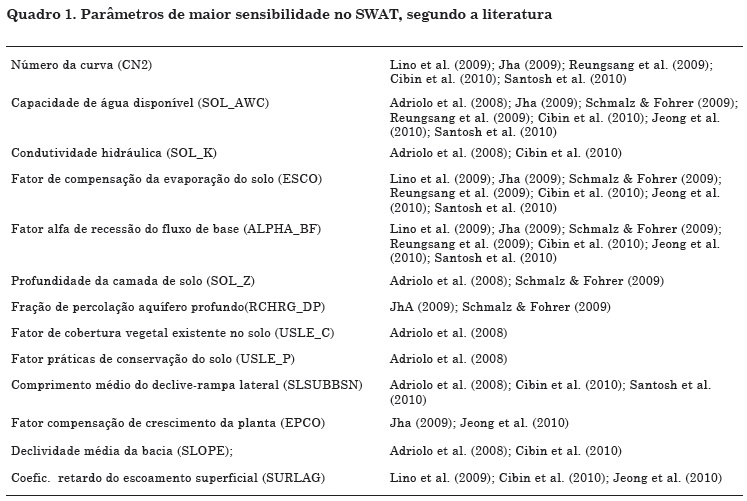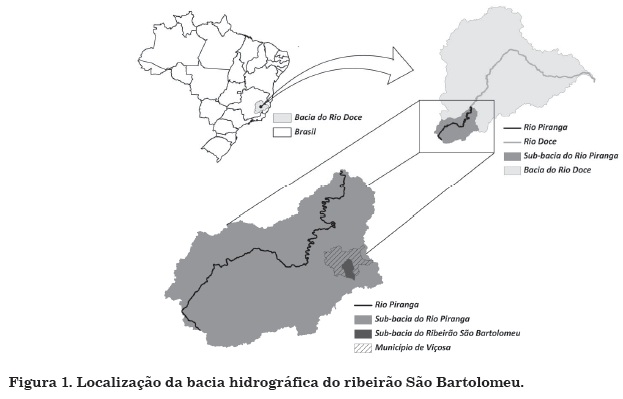Estimates of water and soil losses have been carried out worldwide, using empirical or conceptual models, such as SWAT (Soil and Water Assessment Tool). SWAT, widely used to predict the impact of changes in soil use and management on soil loss and stream flow rate, is extremely sensitive to the quality of input data. Consequently, prior to an application of the model, a sensitivity analysis is required to deal more carefully and with more precision with certain data, reducing the uncertainty and increasing the reliability of the results. Although a slow process, calibration is indispensable to ensure that the simulation results are comparable to the field data. A successful application of the model in this area, with no previous soil and water studies, allows an extrapolation of the results to watersheds with similar characteristics. In this study, a sensitivity analysis and SWAT calibration were carried out with data from 10 plots outlined in the Watershed Sao Bartolomeu, in southeastern Brazil. The results were satisfactory, according to the coefficient of efficiency of Nash and Sutcliffe (COE), used to evaluate the model performance; the COE was 0.808 for sediment yield and 0.997 for the stream flow rate, indicating well-calibrated models. Sensitivity analysis was not influenced by a higher or lower discretization of the watershed, which facilitated the analysis process. The sensitivity of the parameters varied according to the use and soil cover in each sub-watershed, and cannot be generalized, that is, the characteristics of the sub-watersheds influence the parameter sensitivity.
Sao Bartolomeu river; sediment; runoff; coefficient of efficiency











